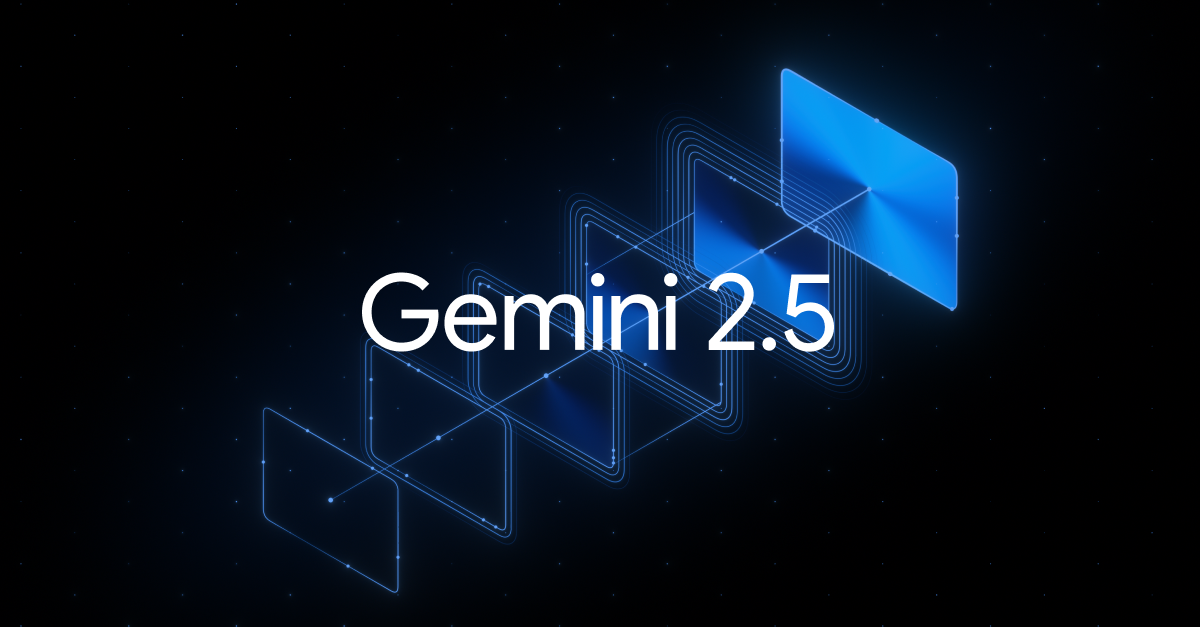Galaxy Z Flip hands-on preview: Samsung just killed the RAZR
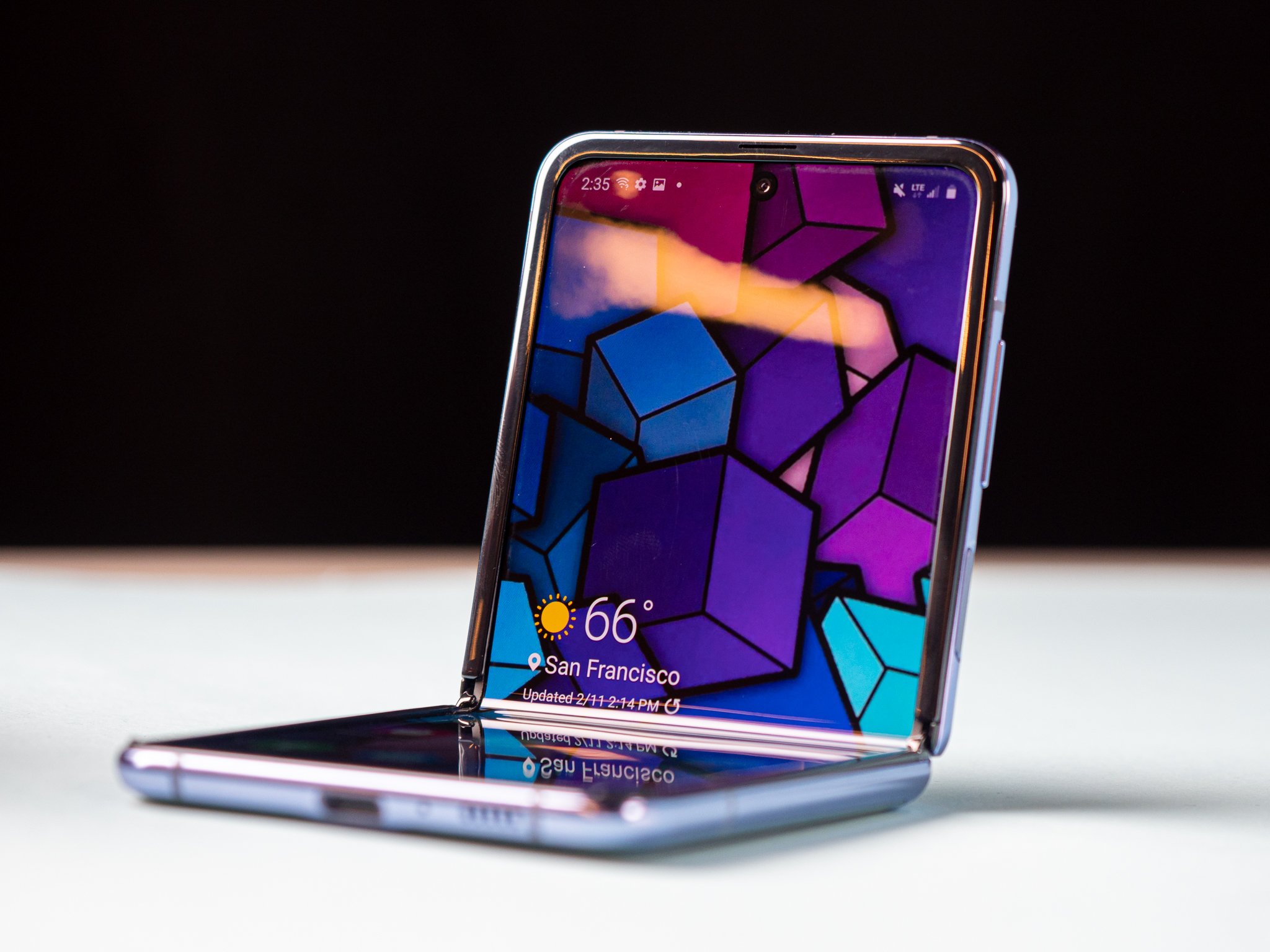
Just as expected, Samsung went ahead and unveiled the new Galaxy Z Flip alongside the Galaxy S20 series at its February launch event. In fact, it actually led the presentation with the Z Flip, which shows just how much it cares to put the spotlight on the new foldable after the Galaxy Fold's rocky launch in 2019.
I've had a solid hour with the Galaxy Z Flip, going over its every curve and getting acquainted with this new form factor. Here are my initial takeaways.
Design: Beauty, covered in fingerprints
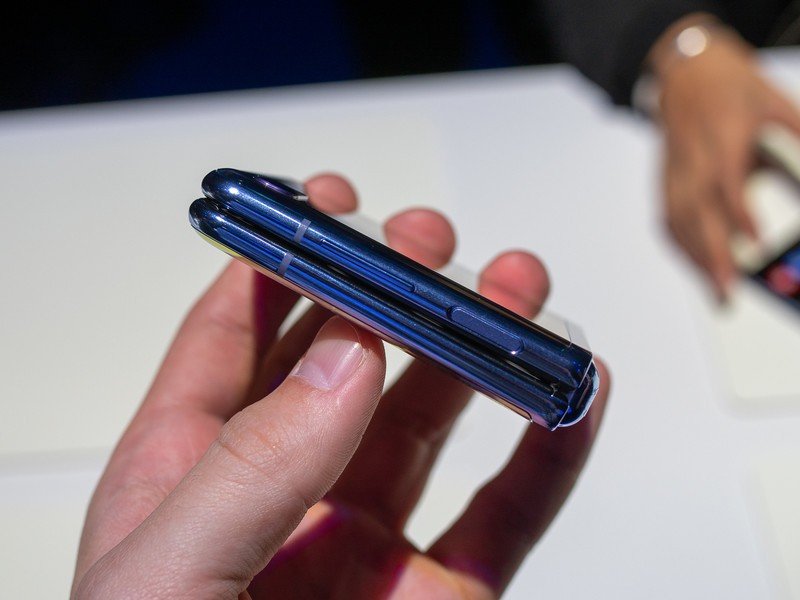
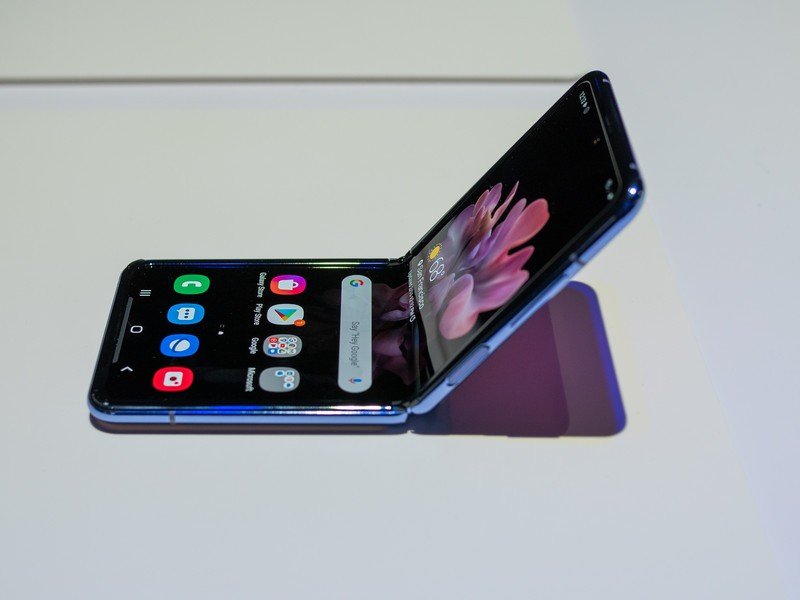
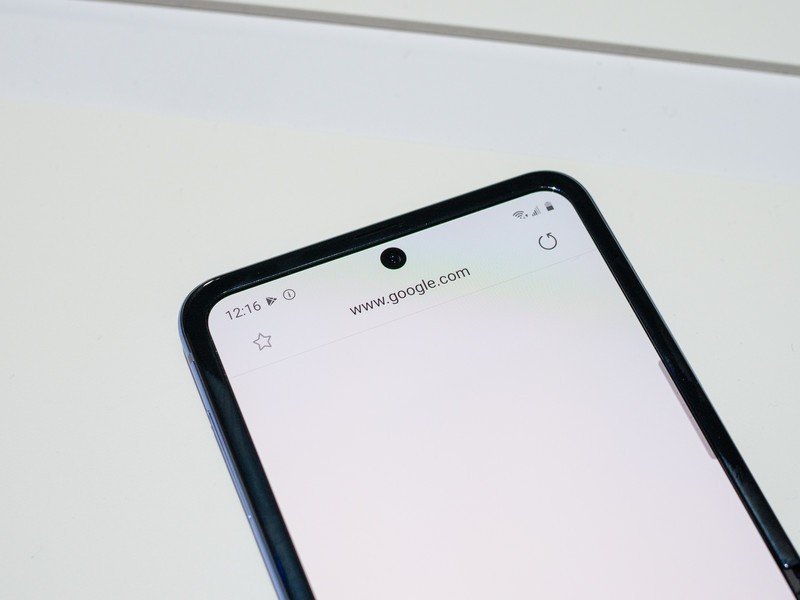
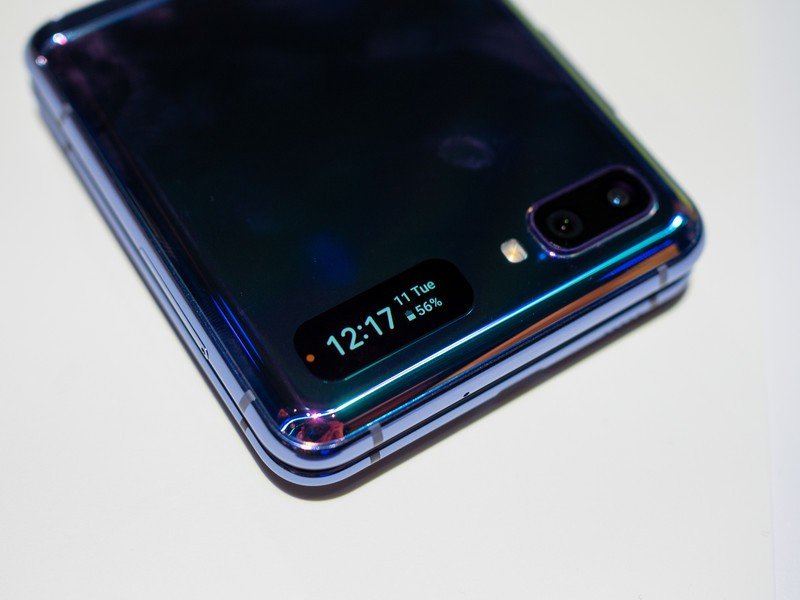
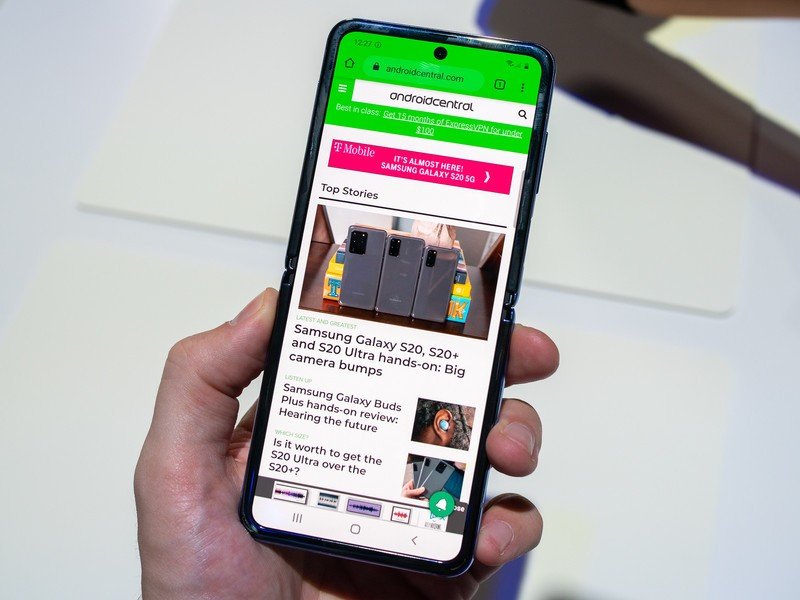
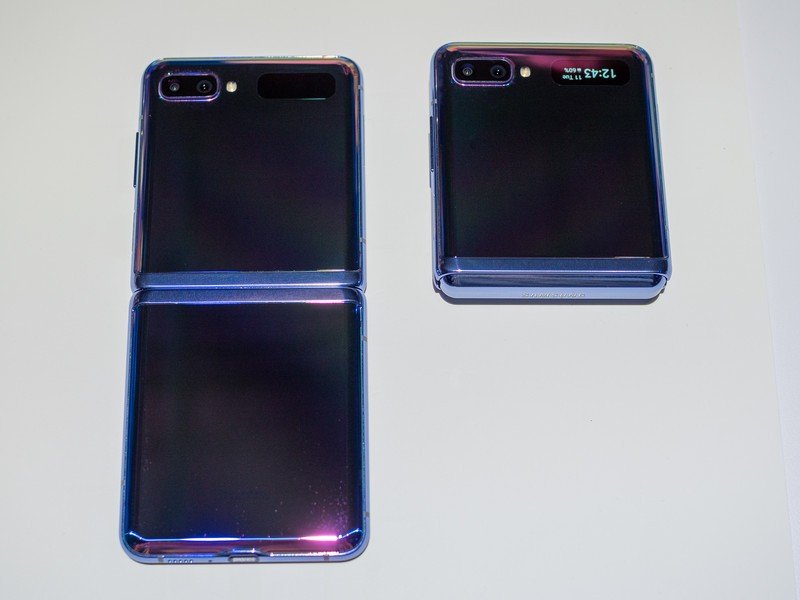
A massive wave of leaks of the Z Flip, along with Motorola's release of the RAZR, have tempered our expectations for this sort of vertical-folding clamshell form factor. Even still, it's quite a sight. Having this roughly square piece of hardware that unfolds to a tall-and-skinny modern smartphone form factor is just downright cool.
The Z Flip's hardware is surprisingly 'normal' outside of the fact that it folds in half.
Outside of the novelty of its ability to fold in half, the hardware is typical Samsung quality. A metal frame rounds out on all sides with great symmetry, and the glass curves to meet it on the back. The one difference is the glass finish, which is incredibly fingerprinty. The super-mirrored finish reminds me of the Galaxy S7 ... but twice as reflective. Of course the issue was of course made worse by harsh lighting at the launch event, but it was impossible to keep smudges from piling up on this thing.
The fingerprint issue was minimized on the all-black model, but that color was so devoid of any interesting features that it makes you want to take on the color-shifting purple or rainbow-like gold and just deal with the fingerprints. After all, you're buying a Galaxy Z Flip to stand out, right? And you absolutely will. But it's not just looks — the hardware feels really nice.
This thing is gorgeous ... until you touch it and it gets loaded with fingerprints.
When the Z Flip is either open or closed, the hardware seems rather ... normal. There's a regular volume rocker where you'd expect it, and a power button that integrates a fingerprint sensor. There's a regular USB-C port and speaker on the bottom, and nothing else particularly interesting anywhere else. And that's a good thing; Samsung made large swaths of this experience very "normal" despite the fact that it folds in half.
On the outside of the Z Flip you'll see a typical pair of cameras — a standard and ultra-wide — next to a tiny 1-inch "cover display" that shows quick information like the time and date, and incoming notifications. It's actually touch-sensitive so you can scroll through recent notifications, but it's so tiny you won't want to interact with it for long. It serves its purpose well for showing you time and date information without having to flip open the whole phone.
Be an expert in 5 minutes
Get the latest news from Android Central, your trusted companion in the world of Android
Hinge and screen: Learning from mistakes
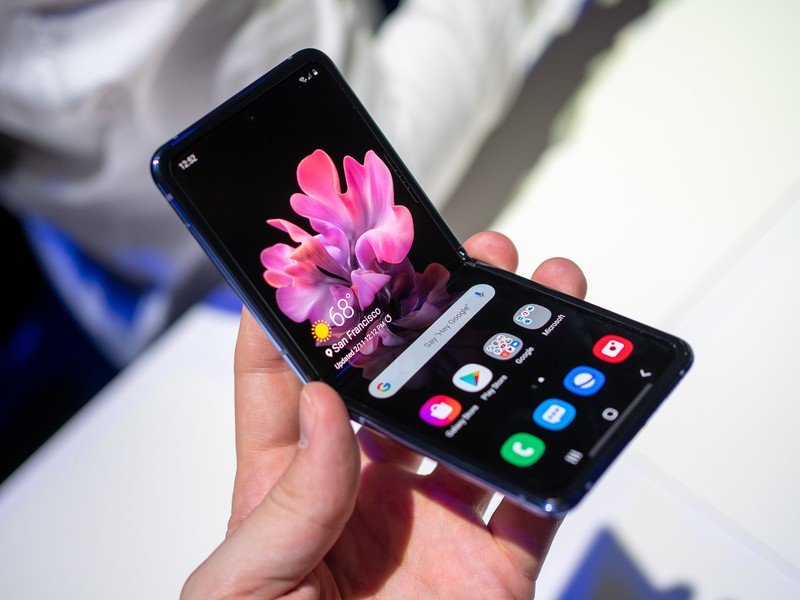
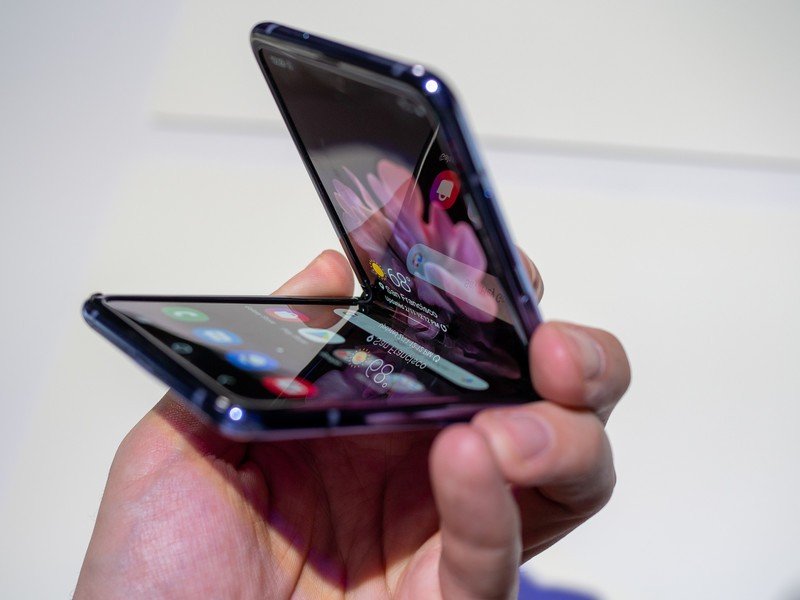
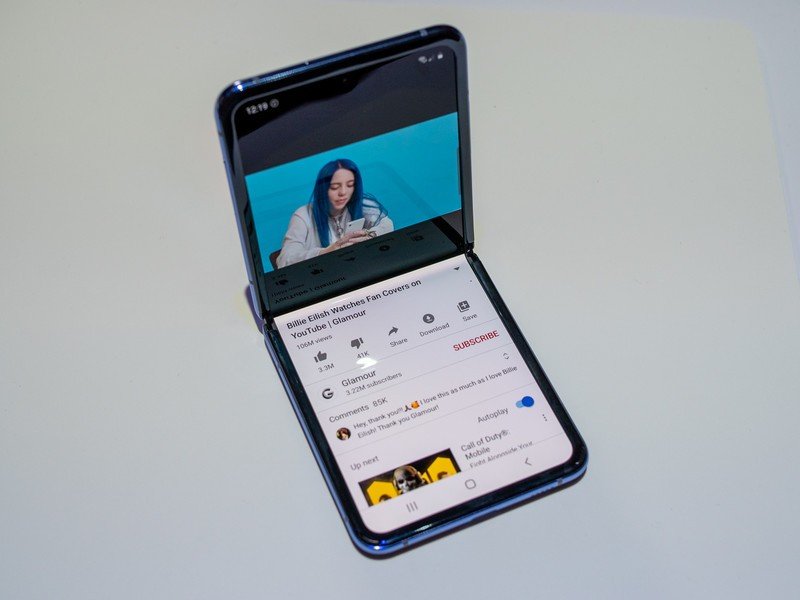
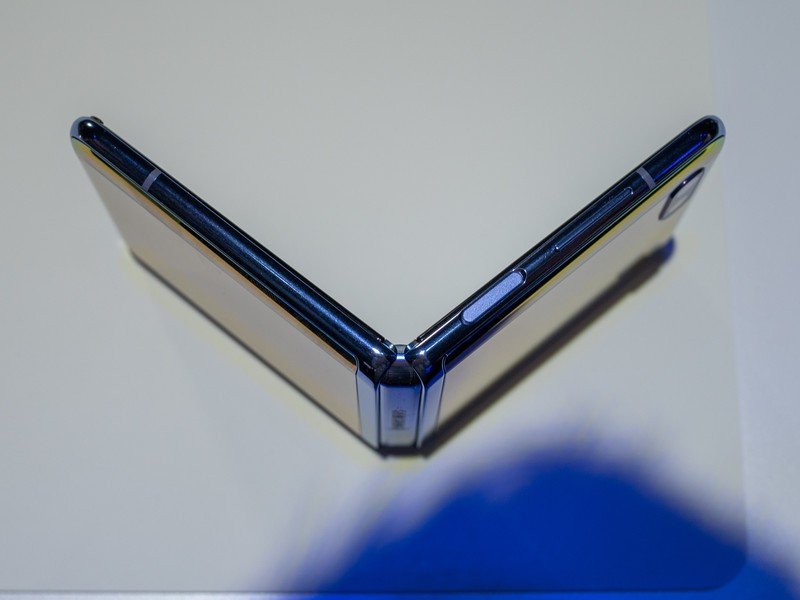
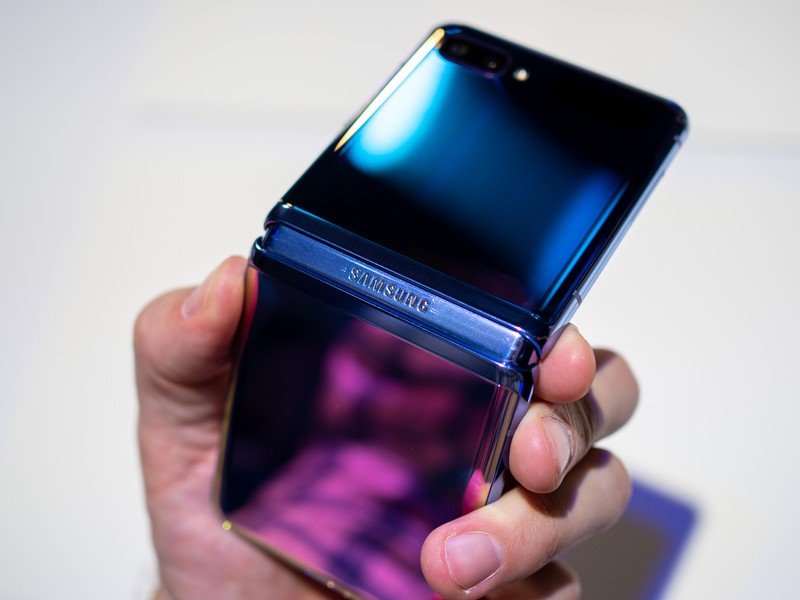
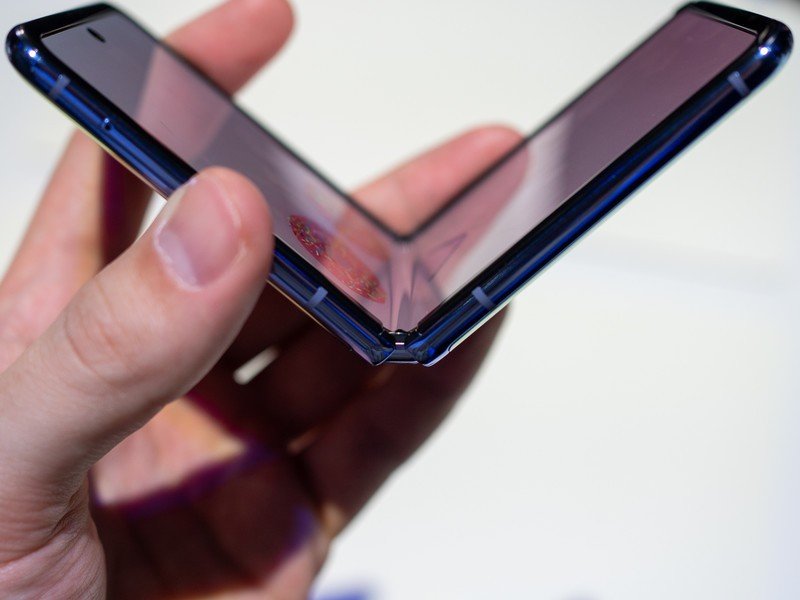
Less than a year ago, we were going through an entire saga of hardware issues with the Galaxy Fold, watching displays fail spectacularly. So it's amazing to see the Galaxy Z Flip debut with several improvements that, when grouped together, seemingly address all of the issues of Samsung's first generation.
Switching to a glass screen covering is a complete game-changer for foldable phones.
First, is the screen covering itself: it's glass. Actual glass, and yet it still folds. It doesn't quite feel like the glass on any other smartphone, but I expected that considering the complex physics involved with it folding. But more importantly, it feels dramatically better than any other folding phone I've touched. The screen glass doesn't flex or dent, and unlike the Motorola RAZR it doesn't shift around when you press it hard.
You can still feel the crease in the middle, but in my time with it I didn't notice it visually. Even when tilting the phone at extreme angle, trying to catch the light in the crease, I barely could see the dip. And because it's glass, and folds intelligently to leave a gap between the panes when closed, I wouldn't expect the crease to get irregular or worsen over time.
The glass covering doesn't flex or dent, and the crease is dramatically reduced.
I can't overstate just how much the screen being covered by glass changes the experience of using a foldable phone. The plastic screen coverings on every other foldable are an eyesore I just can't get over; here, you just feel like you're using a regular smartphone.
The screen itself looks really good, though I haven't used it outdoors yet. At 6.7 inches (21.9:9 aspect ratio) with FHD+ display the density is a little bit on the low side, but once again the glass covering completely makes up for it compared to any other "better" display being covered in plastic.
I'm not sold on the infinitely adjustable hinge, but Samsung has made a lot of changes to improve durability.
Samsung says it made several improvements to the hinge, including a new lining of fibers that will help keep dust and debris from making it behind the display — though there's still no IP rating here. The hinge is also much tighter than even the redesigned Galaxy Fold, and it's so tight that it can actually hold the Z Flip open at any angle. Samsung thinks you'll want to keep the phone open at a 90-degree angle or something more obtuse like a laptop, splitting apps 50/50 along the fold line ... but there really isn't enough screen space to use it this way.
The bigger thing the hinge tightness contributes to is making it more difficult to open and close the Z Flip with one hand. Even doing the classic "wedge your thumb in from the side" move, it's really hard to open up gracefully — though because the screen has glass covering it you're not worried about pressing your thumb on the screen in the process. When it comes to closing the Z Flip, you have to get it really close to closed before it snaps shut on its own. But between the tight hinge and magnets, it closes authoritatively.
More Galaxy Z Flip to come
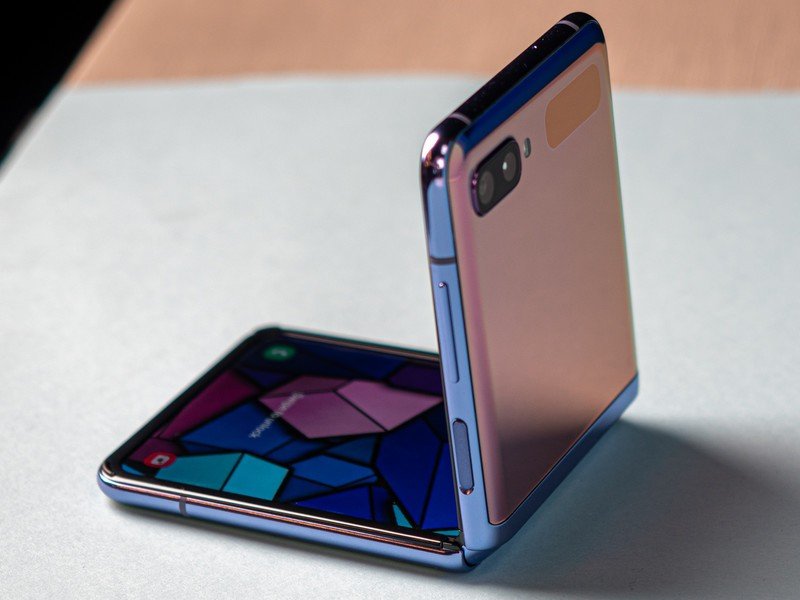
I can't wait to use the Galaxy Z Flip longer. I still need to see what it's like to actually use a phone with this form factor on a daily basis. I don't know how comfortable it is to slide into a pocket, how awkward it can be to use one-handed with that super-tall display, how long the 3300mAh battery will last, and so much more. Samsung's execution is seemingly good, but there are still things inherent with this form factor that I need to figure out.
Andrew was an Executive Editor, U.S. at Android Central between 2012 and 2020.


